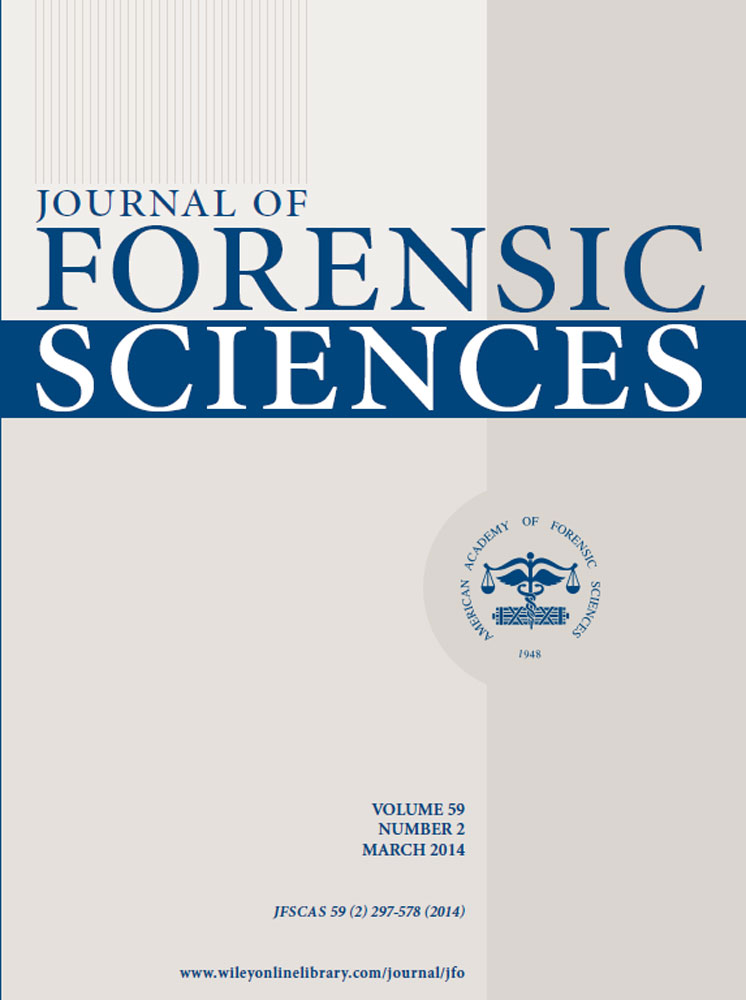Phenolphthalein False-Positive Reactions from Legume Root Nodules†
Abstract
Presumptive tests for blood play a critical role in the examination of physical evidence and in the determination of subsequent analysis. The catalytic power of hemoglobin allows colorimetric reactions employing phenolphthalein (Kastle-Meyer test) to indicate “whether” blood is present. Consequently, DNA profiles extracted from phenolphthalein-positive stains are presumed to be from blood on the evidentiary item and can lead to the identification of “whose” blood is present. Crushed nodules from a variety of legumes yielded phenolphthalein false-positive reactions that were indistinguishable from true bloodstains both in color quality and in developmental time frame. Clothing and other materials stained by nodules also yielded phenolphthalein false-positive reactivity for several years after nodule exposure. Nodules from leguminous plants contain a protein (leghemoglobin) which is structurally and functionally similar to hemoglobin. Testing of purified leghemoglobin confirmed this protein as a source of phenolphthalein reactivity. A scenario is presented showing how the presence of leghemoglobin from nodule staining can mislead investigators.




